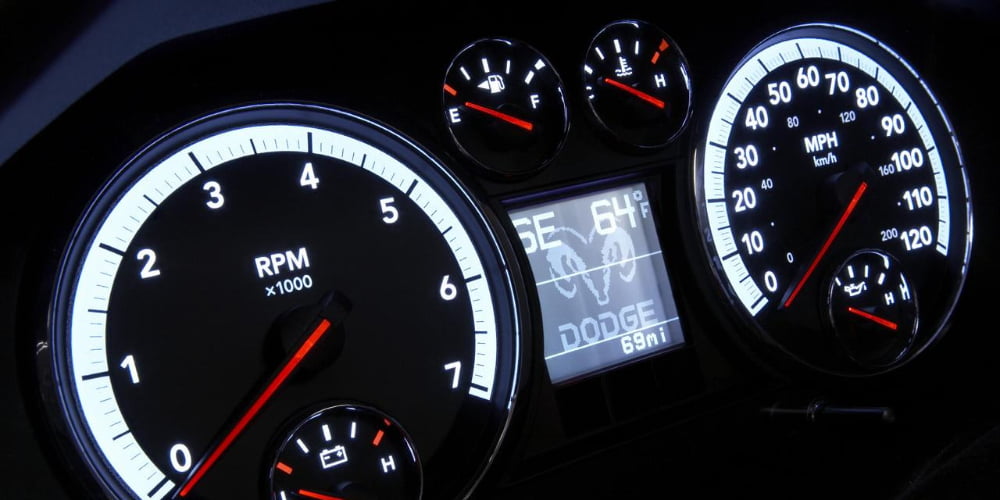2019 Dodge RAM Check Engine Light Codes, Which Methods to Learn?

A 2019 Dodge RAM check engine light codes are being wondered by Dodge vehicle users. These codes can be learned with the following methods:
- Use a diagnostic tool: One of the most accurate and reliable ways to learn the check engine light codes for your 2019 Dodge RAM is to use a diagnostic tool. This is a device that plugs into the vehicle’s diagnostic port and is able to communicate with the vehicle’s computer. It can read the codes stored in the computer and display them on the screen, along with any associated diagnostic trouble codes (DTCs).
- Check the owner’s manual: Another option is to check the owner’s manual for your 2019 Dodge RAM. Some vehicles include a section on diagnostic trouble codes that lists the codes that may be stored in the vehicle’s computer, along with a description of the problem and any potential solutions.

- Use an OBD-II scanner: You can also use an OBD-II (On-Board Diagnostic) scanner to read the check engine light codes. These scanners are designed to be plugged into the vehicle’s diagnostic port and can read the codes stored in the vehicle’s computer. They are widely available at auto parts stores and are relatively inexpensive.
- Check the dashboard lights: Some vehicles may also display the check engine light codes on the dashboard using a series of flashing lights or symbols. In this case, you can try to decode the codes by counting the number of flashes or by looking for specific patterns in the flashing lights.
Regardless of which method you choose, it is important to remember that the check engine light codes are only a starting point in diagnosing the problem with your 2019 Dodge RAM. You will still need to have the vehicle properly diagnosed and repaired by a mechanic or dealership to fix the issue and turn off the check engine light.

2019 Dodge RAM Check Engine Light Codes, What are they used for?
2019 Dodge RAM check engine light codes, also known as diagnostic trouble codes (DTCs), are used to identify problems with a vehicle’s systems. When the vehicle’s computer detects a problem with one of the systems it monitors, it stores a code in its memory that corresponds to the specific issue.
The check engine light is then activated as a warning indicator to alert the driver that there is a problem that needs to be addressed. The codes can be read using a diagnostic tool, such as an OBD-II (On-Board Diagnostic) scanner, and used to diagnose the issue and recommend the appropriate repairs.

In a 2019 Dodge RAM, the check engine light codes can be used to diagnose a wide range of issues, including problems with the vehicle’s emissions system, fuel system, ignition system, and other systems that the computer monitors. Some common check engine light codes in a 2019 Dodge RAM may include codes for issues with the oxygen sensor, spark plugs, fuel pump, and catalytic converter, among others.
It is important to note that check engine light codes are only a starting point in diagnosing the problem with a vehicle. The codes provide information about the specific issue, but they do not necessarily tell you the root cause of the problem or how to fix it. To fully diagnose and repair the issue, you will need to have the vehicle properly diagnosed and repaired by a mechanic or dealership.

What are 2019 Dodge RAM Check Engine Light Codes and Solutions?
Some common check engine light codes in a 2019 Dodge RAM may include:
- P0132: Oxygen sensor circuit high voltage (bank 1, sensor 1)
- P0152: Oxygen sensor circuit high voltage (bank 2, sensor 1)
- P0301: Cylinder 1 misfire detected
- P0302: Cylinder 2 misfire detected
- P0303: Cylinder 3 misfire detected
- P0304: Cylinder 4 misfire detected
- P0456: Evaporative emissions system leak (small leak)
- P0457: Evaporative emissions system leak (large leak)
- P0461: Fuel level sensor circuit range/performance
- P0562: System voltage low
- P2122: Throttle/Pedal position sensor/switch “D” circuit low
- P2127: Throttle/Pedal position sensor/switch “D” circuit high

The specific solution for each of these codes will depend on the root cause of the issue. Some common solutions for check engine light codes may include replacing a faulty oxygen sensor, repairing a misfiring cylinder, fixing an evaporative emissions system leak, or replacing a faulty fuel level sensor.
It is important to note that check engine light codes are only a starting point in diagnosing the problem with a vehicle. The codes provide information about the specific issue, but they do not necessarily tell you the root cause of the problem or how to fix it. To fully diagnose and repair the issue, you will need to have the vehicle properly diagnosed and repaired by a mechanic or dealership.



